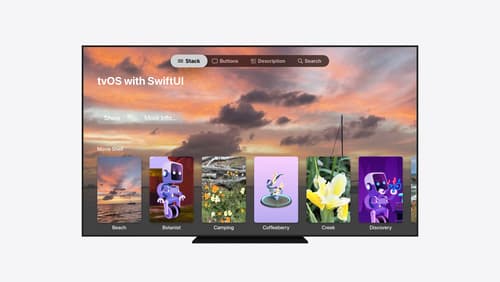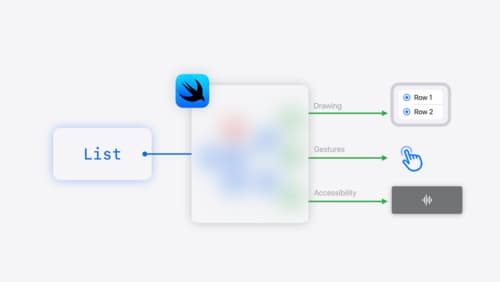How do I use SwiftUI?
Asked on 2024-07-30
2 searches
To get started with SwiftUI, you can follow these steps:
-
Introduction to SwiftUI: SwiftUI is Apple's declarative user interface framework used to build apps across all of Apple's platforms. It allows you to create user interfaces with less code and provides a wide range of features to make your apps feel native on Apple's platforms. You can start by understanding the basics of how views work in SwiftUI. Views are the basic building blocks of user interfaces and are expressed declaratively. You describe what view you want in your user interface, and SwiftUI produces the result. For example, you can create text, images, and controls like buttons using a declarative syntax.
-
Fundamentals of Views: Views in SwiftUI are declarative, compositional, and state-driven. This means you describe what you want to see, and SwiftUI handles the rendering. You can create complex interfaces by composing smaller views together. State-driven views automatically update when the underlying data changes.
-
Built-in Capabilities: SwiftUI comes with a wide range of built-in capabilities, such as navigation, split views, customizable multi-column tables, and presentations like sheets and inspectors. It also provides low-level control for creating custom experiences, such as custom control styles, high-performance imperative drawing with canvas, custom layouts, and even applying custom Metal shaders directly to SwiftUI views.
-
Platform Integration: SwiftUI is designed to work across all Apple platforms, including iOS, macOS, watchOS, and tvOS. It has a common set of high and low-level components across platforms but also includes specialized APIs for each platform. This allows you to create apps that feel native on each platform while sharing a significant amount of code.
-
SDK Interoperability: SwiftUI can be incrementally adopted into existing apps, allowing you to integrate it with other frameworks. For example, you can use Swift Data for persistent models and Swift Charts for creating information visualizations. SwiftUI's declarative, compositional, and state-driven views make it easy to integrate with other parts of the SDK.
-
Getting Started: To start using SwiftUI, launch Xcode and begin creating your first app or incorporate SwiftUI into an existing app. Follow along with SwiftUI tutorials, which guide you through building different apps, and explore the documentation for more examples and detailed information.
For a more detailed introduction and to see SwiftUI in action, you can watch the session SwiftUI essentials.
Relevant Sessions
These sessions provide a comprehensive overview of SwiftUI and its capabilities, making them a great starting point for learning how to use SwiftUI in your projects.

Migrate your TVML app to SwiftUI
SwiftUI helps you build great apps on all Apple platforms and is the preferred toolkit for bringing your content into the living room with tvOS 18. Learn how to use SwiftUI to create familiar layouts and controls from TVMLKit, and get tips and best practices.

Platforms State of the Union
Discover the newest advancements on Apple platforms.

SwiftUI essentials
Join us on a tour of SwiftUI, Apple’s declarative user interface framework. Learn essential concepts for building apps in SwiftUI, like views, state variables, and layout. Discover the breadth of APIs for building fully featured experiences and crafting unique custom components. Whether you’re brand new to SwiftUI or an experienced developer, you’ll learn how to take advantage of what SwiftUI has to offer when building great apps.
